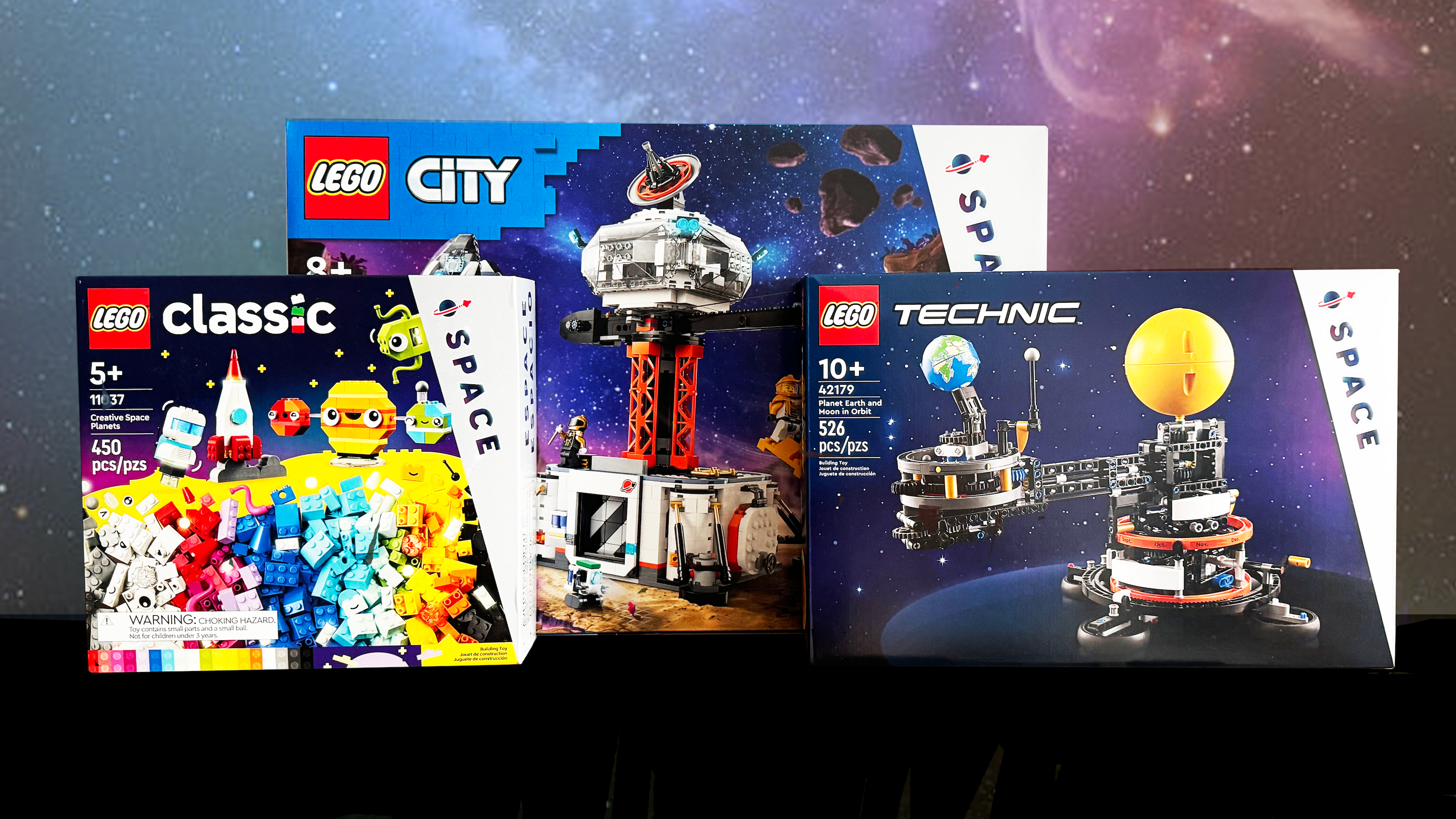
Eighty-seven percent of Generation Alpha is interested in discovering new planets, while over half of kids ages 4 through 14 aspire for a career in space. Not only does this data collected by The LEGO Group imply that kids are less interested in becoming social media influencers than they were 5 years ago, but it tells us that the next major space age is almost certainly on the horizon.
I mean, what kid wouldn’t dream of adventures in outer space?
“Kids are way more interested in the storytelling aspect of space, so using space to be creative and have this endless place to be imaginative,” said designer Dan Meehan, Creative Lead for LEGO Space. “And for us, that really informed the space we were designing.”
Meehan‘s team is behind a large collection of space-themed LEGO sets that have launched in recent weeks, marking a major moment for the 45-year-old franchise. Maybe you’ve seen the swirling 3,000+-piece The Milky Way Galaxy Mosaic (31212) trending online, or checked out the spinning Planet Earth and Moon in Orbit (42179) from LEGO’s Technic series that features gear wheels and axles. LEGO Space also extends to LEGO Friends with the Mars Space Base and Rocket (42605), as well as LEGO City with the Modular Space Station (60433).
“I felt a big responsibility to continue that fantastic history, that fantastic lineage of inspiring kids with great space sets,” Meehan said of the new collection. The designer clued me into the number of connecting themes between these sets, from corresponding color palettes to hidden NASA-caliber details to an emphasis on embracing the possibilities in space’s unknown.
“We've talked to kids and they've told us that they know more about space than their parents,” Meehan said. “We think it’s just kids who learn a lot of stuff at school about space, but it isn’t necessarily that. It's because the kids say to us, ‘well, you can't tell me that this thing doesn't exist, or this might not be out there,’ citing that somewhere around 95% of space is still unexplored.”
The LEGO Group regularly takes cues from kids on which sets to see through to production, as well as what elements of a specific set they might want to see changed. As part of developing LEGO Space sets, the design team had to tap into a bit of the very imagination it aims to inspire. Meehan recounted an instance where one kid insisted on flying a six-wheel rover around a playroom, despite the build not looking like it’s meant to be airborne.
“I said, ‘Okay, so do we need to add wings to it?’ And he's like, ‘No, it doesn't need wings, they can just fly.’ In his eyes, in his imagination, of course it could fly. It's in space.” The creative thinking didn’t stop there. “He said the only thing I want is more aliens. So we put more aliens in the set.”
Aliens, in fact, are another recognizable theme across LEGO Space. If you explore the collection of sets, you’ll find aliens crashing on Mars inside a meteorite, aliens propelled by steam-jetting geysers, and aliens curiously hanging around a space science lab. (These neon green characters even invaded the t-shirt Meehan wore during our video call, though regrettably, such a shirt is not available for sale.)
Generation Alpha is predicted to be the first to meet aliens in their lifetime, according to The LEGO Group’s research. Although this may sound inconceivable to adults, it seems possible to kids. That said there are plenty of LEGO Space sets, including a few co-developed with NASA, that deliver the kind of pragmatic specs that more seasoned space enthusiasts can appreciate.
In designing the Mars Crew Exploration Rover (42180), Meehan’s team wanted the set to be capable of carrying out a realistic space mission scenario. They worked with NASA to determine what kind of energy sources researchers would need to survive on the rover for 60 days, and how said sources would be stored in the rover — all to scale, of course.
“Their day in and day out is real space exploration, and then we come along with this idea for a cool toy,” Meehan said. There were multiple instances where NASA proposed alterations from a practical standpoint, and though it took several iterations to get right, the collaboration resulted in an impressive set. “NASA fact checks it, and we realize we can make a cool function out of it, and it makes the model a better play experience for LEGO Technic kids and adults.”
It's obvious the brand shoulders the responsibility of inspiring kids seriously. Playing with any 'ole space toy is one thing, but takes sparking genuine interest to lead younger generations towards important careers as astronauts or other space-related roles.
“We want kids to see space as an endless playground for their imagination, right?," Meehan said. "So they can really harness their creativity to show us what could be out there."







